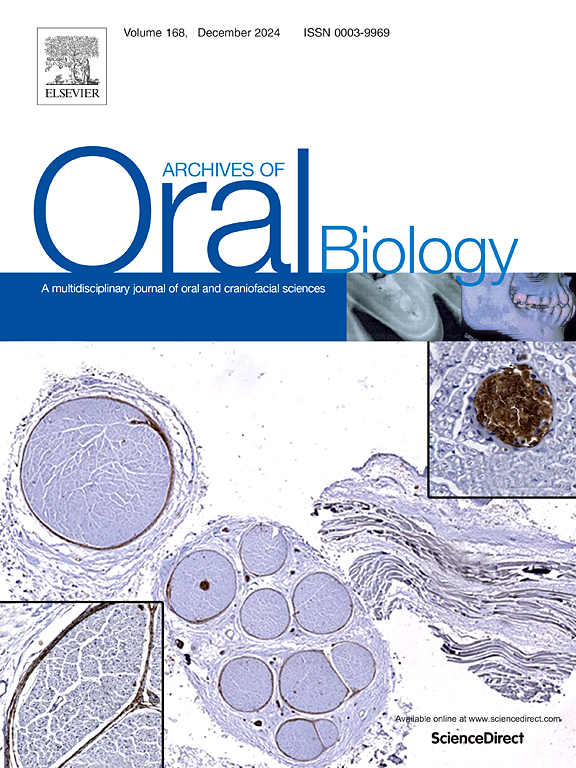Nanoencapsulation, biocompatibility and antibiofilm properties of chitosan/nisin Z spheres
IF 2.2
4区 医学
Q2 DENTISTRY, ORAL SURGERY & MEDICINE
引用次数: 0
Abstract
Objectives
To study antibiofilm formation properties and biocompatibility of nisin Z for oral applications by encapsulating it in a highly muco-adhesive chitosan nanosphere and testing its effects against a multispecies biofilm and in vitro wound healing assay.
Materials and methods
Nisin Z was encapsulated in chitosan. Encapsulation parameters were evaluated using dynamic light scattering and visualised with microscopy. The effects on biofilm growth were tested using a Calgary biofilm device against a five species biofilm model. The effects on human gingival fibroblast (HGF) growth and migration were examined using an Idibi (500 nm gap) migration assay and the percentage of gap closure measured using ImageJ.
Results
20,000 IU/ml (0.525 mg/ml production concentration) nisin Z in a 1:40 ratio of TPP:chitosan produced optimal nanospheres with a low polydispersity index of 0.498 and average size of 264.8 nm. The freeze-dried nanospheres have a dose-dependent effect on biofilm formation, significantly reducing biofilm attachment compared to the positive control. No colonies were observed for chitosan/nisin Z nanospheres at > 6.25 mg/ml. HGFs in the control and 1000 IU nisin Z (unencapsulated) groups showed the most gap closure. The treatment group containing 50 mg/ml chitosan/nisin Z nanospheres showed gap closure comparable to the control.
Conclusions
Chitosan/nisin Z nanospheres were produced with antibiofilm activity with > 6.25 mg/ml nanospheres, while up to 50 mg/ml had no significant effect on HGF gap closure in vitro. Thus, nanoencapsulated nisin Z has potential as a therapeutic agent for the treatment of periodontitis.
求助全文
约1分钟内获得全文
求助全文
来源期刊

Archives of oral biology
医学-牙科与口腔外科
CiteScore
5.10
自引率
3.30%
发文量
177
审稿时长
26 days
期刊介绍:
Archives of Oral Biology is an international journal which aims to publish papers of the highest scientific quality in the oral and craniofacial sciences. The journal is particularly interested in research which advances knowledge in the mechanisms of craniofacial development and disease, including:
Cell and molecular biology
Molecular genetics
Immunology
Pathogenesis
Cellular microbiology
Embryology
Syndromology
Forensic dentistry
 求助内容:
求助内容: 应助结果提醒方式:
应助结果提醒方式:


